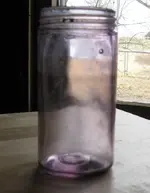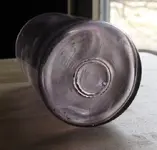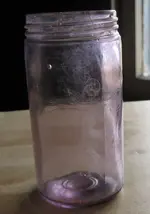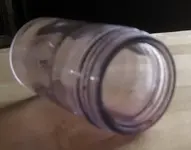naturegirl
Bronze Member
- #1
Thread Owner
Hi! We found this jar on a hillside yesterday with the remains of a chevrolet from the 19-teens. We think. I've read about manganese dioxide turning purple, so I think this jar is like that, pre WWI, it has a mold seam and a pontil, so was it blown into a mold? The mold seam does not extend up over the twist-lip, it looks like it in the pic, but I think that is a scratch, or crack. I think the mold seam stops at the lip. When did they start putting twist tops on, and is this a transitional piece, so to speak? Glass is new to me, I'm learning, correct me if I'm wrong on anything. Also found some green peices of a glass bowl that look like the green that glows, haven't got a blacklite. Will this purple glow too?
Thanks for looking
naturegirl
Thanks for looking
naturegirl








